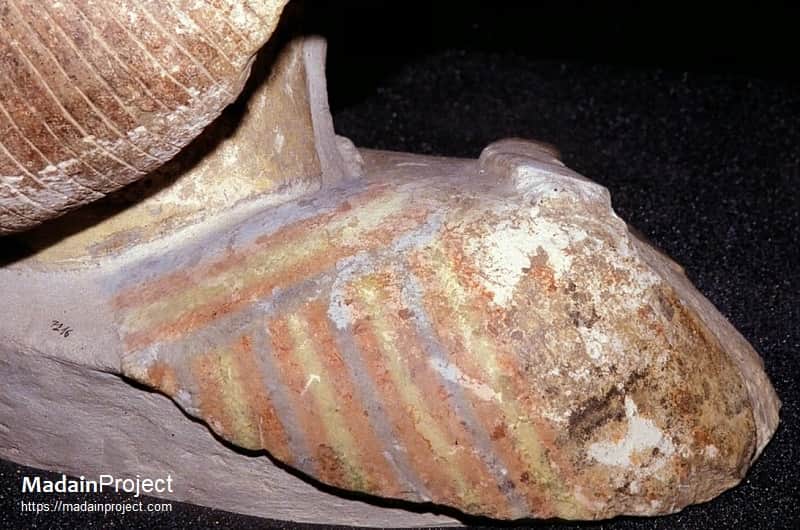TRANSPONDER wrote: ↑Fri Mar 04, 2022 9:56 am
When viewed through the Biblical lens indeed. But it means nothing that I don't buy this wall painting and a cylinder - seal as showing that the Hyksos were Israelites, I have to give good reasons to doubt.
Firstly, the cylinder -seal. You would have to do more than make or recycle a claim that it represents the 12 tribes of israel. We have a man, a boat, a lion as a repeated pattern. How do you make that the 12 tribes?
According to author, Michael Bar-Ron, the reason it is supportive of the 12 tribes of Israel is the Biblical references the seal has. It also reflect the birth order of the sons of Israel: Reuben, Simeon, Levi, Judah, Dan, Naphtali, Gad, Asher, Issachar, Zebulun, Joseph, and Benjamin.

In the 1 o'clock position is a bull/ox. Joseph is associated with a bull/ox in the Bible. Since Joseph is preeminent among the brothers, he is presented at the top.
Deut 33:13-17 (ESV)
13 And of Joseph he said, "Blessed by the LORD be his land, with the choicest gifts of heaven above, and of the deep that crouches beneath,
14 with the choicest fruits of the sun and the rich yield of the months,
15 with the finest produce of the ancient mountains and the abundance of the everlasting hills,
16 with the best gifts of the earth and its fullness and the favor of him who dwells in the bush. May these rest on the head of Joseph, on the pate of him who is prince among his brothers.
17 A firstborn bull- he has majesty, and his horns are the horns of a wild ox; with them he shall gore the peoples, all of them, to the ends of the earth; they are the ten thousands of Ephraim, and they are the thousands of Manasseh."
Reuben is associated with unstable water.
Gen 49:3-4 (ESV)
3 Reuben, you are my firstborn, my might, and the firstfruits of my strength, preeminent in dignity and preeminent in power.
4 Unstable as water, you shall not have preeminence, because you went up to your father's bed; then you defiled it- he went up to my couch!
Even though Reuben was born first, he does not appear in the top of the seal, but beneath the bull.
Simeon and Levi are not looked upon favorably and are represented on the seal as a bird of prey.
Gen 49:5-7 (ESV)
5 Simeon and Levi are brothers; weapons of violence are their swords.
6 Let my soul come not into their council; O my glory, be not joined to their company. For in their anger they killed men, and in their willfulness they hamstrung oxen.
7 Cursed be their anger, for it is fierce, and their wrath, for it is cruel! I will divide them in Jacob and scatter them in Israel.
Judah is associated with a lion, located at the bottom right.
Gen 49:9 (ESV)
Judah is a lion's cub; from the prey, my son, you have gone up. He stooped down; he crouched as a lion and as a lioness; who dares rouse him?
Dan is associated with a serpent, which is at the 6 o'clock position.
Gen 49:17 (ESV)
Dan shall be a serpent in the way, a viper by the path, that bites the horse's heels so that his rider falls backward.
Naphtali is a doe, which is looking down underneath the curtain at the 9 o'clock position.
Gen 49:21 (ESV)
Naphtali is a doe let loose that bears beautiful fawns.
Bar-Ron believes Gad is represented by a mushroom, but I think it rather looks like a heel coming up from the curtain.
Gen 49:19 (ESV)
"Raiders shall raid Gad, but he shall raid at their heels.
Asher is depicted at the top left as an olive branch with 8 leaves (and being the 8th born son).
Gen 49:20 (ESV)
"Asher's food shall be rich, and he shall yield royal delicacies.
Issachar and Zebulun are associated with ships.
Gen 49:13 (ESV)
Zebulun shall dwell at the shore of the sea; he shall become a haven for ships, and his border shall be at Sidon.
Deut 33:19 (ESV)
And of Zebulun he said, "Rejoice, Zebulun, in your going out, and Issachar, in your tents.
19 They shall call peoples to their mountain; there they offer right sacrifices; for they draw from the abundance of the seas and the hidden treasures of the sand."
This only leaves Benjamin left. The author states the large central image could either be Benjamin or an anthropomorphic image of the God of Israel.
Deut 33:12 (ESV)
Of Benjamin he said, "The beloved of the LORD dwells in safety. The High God surrounds him all day long, and dwells between his shoulders."
I would tend to believe the central image is Benjamin since all the other brothers are depicted on the seal. Also, there has never been an artistic portrayal of the God of Israel anywhere.
Gen 49 does not portray Benjamin favorably.
Gen 49:27 (ESV)
"Benjamin is a ravenous wolf, in the morning devouring the prey and at evening dividing the spoil."
Since Benjamin is Joseph's favorite brother, he would not want to portray him in a negative light as a wolf, but does portray him as devouring the prey and dividing the spoil.
All the images are covered by a curtain, which I believe is symbolic of all being in the house of Israel.





